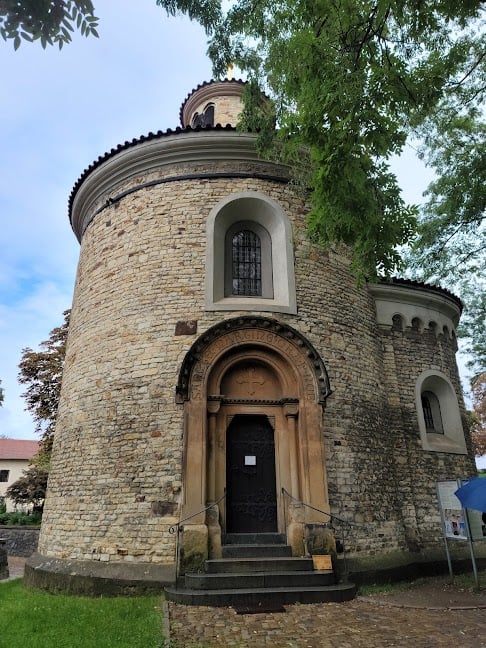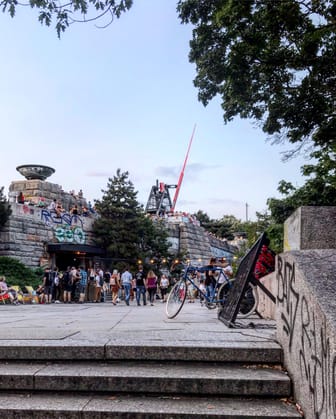Vyšehrad





What people say
Pedro Pereira
Available for hire
"The castle on Vyšehrad Hill, originally known as Chrasten, dates back to the 10th century, established after Prague Castle. This site is steeped in legends, including tales of Princess Libuše, the Women's War, and heroes like Bivoj and Horymír, though historical documents do not confirm these stories. Under Boleslav II, Vyšehrad featured a classic Přemyslid castle that included a mint for producing denarius coins. This marks the first use of the name Vyšehrad in its coinage, even though written records appear later. The 11th century saw Vyšehrad gain prominence as the temporary seat of Bohemian King Vratislav I, and the Přemyslid dynasty ruled from here until 1140.
The original wooden structure was transformed into a stone castle, complete with new churches and the establishment of the Vyšehrad chapter, yet it remained subordinate to Prague Castle. From the latter part of the 12th century, its importance waned until Charles IV sought to revive its status, instituting a pilgrimage to Vyšehrad for new kings on the eve of their coronation. This practice began on September 1, 1347, with the king shown symbolic objects linked to the Přemyslid lineage. Charles IV commissioned the construction of an impressive royal palace, fortifications, and restored the Peak Gate, which still stands today, having been reconstructed in 1903.
In 1364, significant renovations began on the Capitular Temple of St. Peter and Paul, where archaeological findings revealed the foundations of a Romanesque apse from a basilica built post-1070, which was once the largest sacred structure in pre-Hussite Prague. Although the church is believed to house the remains of several Přemyslid princes, searches for their burial sites have been unsuccessful. Nearby, remnants of Charles IV's Gothic palace can still be seen, adding to the historical allure of the site.
The Hussite victory at the Battle of Vyšehrad in 1420 led to the destruction of most structures from that era, except for the restored chapter temple and the Romanesque Rotunda of St. Martin. Built in the late 11th century, the rotunda was repurposed as a gunpowder storage after the fortress's construction. Efforts were made to preserve it during plans for new urban developments in 1841. The Vyšehrad Chapter acquired and restored it in 1875, with interior paintings added later, resulting in its current appearance.
The Basilica of St. Lawrence, the second oldest structure at Vyšehrad, was discovered during excavations in 1903 and was also constructed in the late 11th century. Gothic remains, including the sentry bastion known as the Baths of Libuše, and fragments of the Peak Gate, still evoke the site’s legendary past, with tales of Libuše and her exploits.
The construction of the Vyšehrad citadel began in 1650 under Ferdinand III, resulting in a Baroque fortress characterized by high brick ramparts. Various notable architects and builders from Italy contributed to its design. The fortress was further fortified during the French and Prussian occupations, which included the creation of extensive underground casemates that served as barracks and storage areas. These tunnels are accessible to the public today, featuring an impressive sculptural gallery that showcases original statues from Charles Bridge.
In 1883, Vyšehrad was integrated into Prague, leading to the dissolution of the fortress. Despite its historical decline, the area continued to develop, with significant 19th-century buildings, such as the new-Gothic New Provost's Residence, contributing to its architectural heritage. The Vyšehrad tunnel was also constructed to connect the site to the city, featuring a memorial plaque and an observation tower.
In recognition of its historical significance, the Vyšehrad area was declared a national cultural monument in 1962. In 1991, parts of the site were returned to the Vyšehrad Chapter, while the remaining areas are managed by a cultural organization established in 1970, ensuring the preservation of this landmark's rich history and cultural heritage."
Read more in:
Lyndsey Kerridge
Available for hire
"This one is slightly further out but gives incredible views of the city.
Vyšehrad is a historic fort in Prague, Czech Republic, just over 3 km southeast of Prague Castle, on the east bank of the Vltava River. It was built in the 10th century.
It is perched atop a rocky outcrop overlooking the Vltava River, the Vysehrad Castle is a testament to centuries of Czech history, culture, and architectural prowess.
This castle served as a seat of power for Czech rulers and witnessed the rise and fall of several dynasties.
If visiting the Vysehrad Castle, look out for the grand Basilica of St. Peter and St. Paul for its neo-Gothic facade and ornate interiors. The ancient Rotunda of St. Martin is known for its Romanesque build and tells stories of the castle’s glorious past."
Read more in:
Remi Gourmel
"This castle is often called the 2nd castle of Prague but is not to be forgotten.
Many tourists visiting Prague for a few days do not have the time to visit both, but Visehrad deserves to be known as well.
You will find yourself in a calm park overlooking the river and the whole city, with a beautiful citadel and one of the two oldest churches in Prague.
It gives you a completely different view of Prague while being in a more quiet and peaceful environment.
It is one of my favorite view points in Prague and every time I had friends of family visiting, I would always take them there.
You have two ways to access it:
1. climbing a few dozens of stairs from the river side, or
2. stopping at metro stop "Vysehrad" (red line) and walking through the park "
Read more in:
Mentioned in these guides
About Vyšehrad
Get the inside scoop on Vyšehrad from local experts, travel creators, and tastemakers. Browse genuine trip notes, Vyšehrad reviews, photos, travel guides, and itineraries from real travelers and plan your trip with confidence.
Phone
Save this spot for later or start mapping out a new trip today
Try our AI Travel Assistant and get instant answers to any questions about your trip.
Ask ThatchGPT


